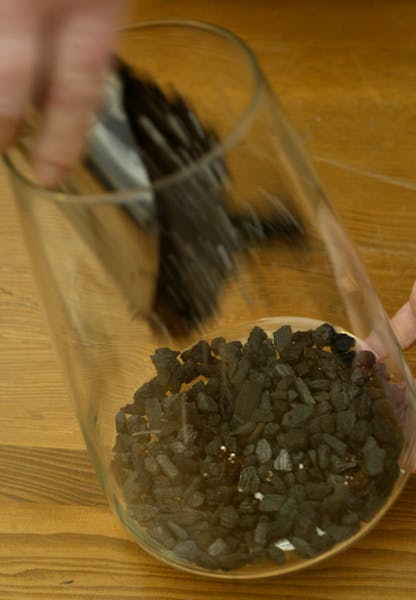By this time of winter, we start to dream about anything green. Even the memory of being in a garden filled with warm sunshine can bring tears to our eyes. But it's possible to recapture that sensation with a terrarium — a lush, green reminder of spring in miniature.
Terrariums date back to Victorian times, when it was discovered that glass containers were ideal for transporting delicate plants, which were all the rage with plant collectors of the era. Terrariums have remained popular not only because they're portable, but also because they're impervious to the cold, they're more manageable than a life-size garden and, of course, they're cute.
So cute, in fact, that tending them can be habit-forming.
"Last year, I gave them out as Christmas presents and birthday presents," said Elizabeth Leeper of Edina, who recently led a workshop for her garden club on how to make terrariums. "I have three on my coffee table now," she said.
If constructed correctly, terrariums also can be very low-maintenance. Many plants can thrive for months in an enclosed, clear glass environment. And they typically need little water and no fertilizer.
Cindy Tong, a horticultural science professor at the University of Minnesota, tends a large terraria display in Alderman Hall on the St. Paul campus. But that doesn't mean she spends a lot of time in care and feeding. "We're all too busy to water these plants," Tong explained.
The plants release moisture through tiny openings on the leaves, then the water is picked up by nearby plants and recirculated, explained Tong. "I look for condensation [on the glass surface] and then I don't worry about them."
For Mary Jane Lavin of Mother Earth Gardens in Minneapolis, terrariums are more than a low-maintenance way to garden indoors. "I call these little biology experiments," she said.
Lavin likes to experiment with different growing media and different plants, aiming for a pleasing mix of textures, sizes and colors.
But for green thumbs of all ages, terrariums can be a gateway to fairy gardening.
"College kids are having fun making them for a dorm room apartment," said Susie Bachman, vice president of marketing and sales at Bachman's. "They can be as small as a 4- to 6-inch pot — whatever your space allows."
Amy Bryant Aiello understands the draw.
Aiello, a Minnesota native, is so into terrariums that she wrote a book about them, "Terrarium Craft." For Aiello, an artist who now lives in Portland, Ore., terrariums are a creative outlet.
"You can create a complete world, so it's not just a plant growing in a pot, but working with all the textures of life," she said.
When constructing a terrarium, Aiello likes to create an imagined place or reconstruct a memory with their miniature worlds, for example using treasures from a hike, such as a feather or a seashell. "You can change what's in them. You can add things to it," she said. "It's a place for continual play."
Gail Brown Hudson is a Minneapolis freelance writer, working on a master's degree in horticulture at the University of Minnesota.
In heated western Minn. GOP congressional primary, outsiders challenging incumbent

Minnesota Sports Hall of Fame: A class-by-class list of all members

This retired journalist changed professional wrestling from Mankato

